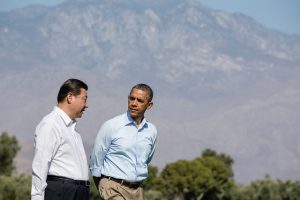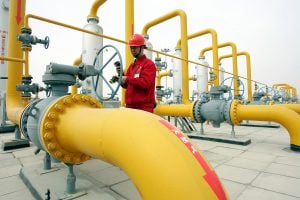Chinese companies are poised to accelerate international investment in clean energy technology and fill the void left by such major economies as the US, new data shows.
A new report from the Institute for Energy Economics and Financial Analysis (IEEFA) reveals that China invested a record US$32 billion (220 billion yuan) in overseas renewable energy and related technologies last year, marking a 60% year-on-year increase in spending.
Over the period 2015-2021, China will install around a third of the world’s total wind energy, solar and hydroelectric generation capacity. Meanwhile, China-led lending institutions, such as the Asia Infrastructure Investment Bank (AIIB) and the Export-Import Bank of China, have enough financial capacity to lead electricity-sector transformations across Asia.
The scale and growth of this investment indicates that China is ready to embrace the role of global leader in the 21st century's "clean energy era" with future US environmental policy under a Trump administration uncertain.
“The US is already slipping well behind China in the race to secure a larger share of the booming clean energy market. With President-elect Trump talking-up coal and gas, prospective domestic policy changes don’t bode well,” said Tim Buckley, director of energy finance studies, Australasia, at IEEFA, in a statement.
“If the US is serious about stimulating manufacturing based growth, this isn’t a sector to turn your back-on,” he added.
China is already a leader in terms of domestic investment in renewable energy. On Thursday 5, an announcement from China’s National Energy Administration (NEA) revealed that China will plough 2.5 trillion yuan (US$361 billion) into renewable power generation by 2020, as part of its five-year economic development plan (The 13th Five-Year Plan), as it shifts its domestic market away from dirty coal power towards cleaner fuels.
Part of this “Going Global” strategy dovetails with plans to build a series of trade and infrastructure networks across Asia reaching as far as Europe, under the banner of “One Belt One Road” or the “New Silk Road”.
This means that China will become the world’s largest employer of green energy jobs globally. The International Energy Agency’s World Energy Outlook for 2016 estimates that Chinese firms hold 3.5 million of the 8.1 million renewable energy jobs worldwide. This compares to the 769,000 jobs dependent on renewables in the US.
The bulk of Chinese investment in wind and solar energy installation is being channelled into the US, Germany, Italy, Australia and South Africa. In terms of new markets, Latin America is currently one of the most attractive regions for renewable energy development and Chinese companies are already invested heavily in Mexico, Brazil, Argentina, Chile, and elsewhere in the region.
In 2016, Tianqi Lithium, China’s largest extractor of lithium from ores, invested US$2.5 billion (17.2 billion yuan) in acquiring a monitor stake in SQM of Chile, the world’s fourth largest lithium farm. Lithium is used to make batteries for electric vehicles. Over the next nine years global demand for the metal for battery use will double, according to IEEFA’s report.
In the other strategic area of grid transmissions, the State Grid Corp of China (SGCC) last year pledged US$13 billion (89.5 billion yuan) towards an energy and electricity and distribution deal with Brazil’s CPFL Energia SA. The influx of Chinese money in Latin America is expected to have serious implications for regional geopolitics, adding to competition from US and European countries over influence in the region.
“China understands that renewables present a huge commercial opportunity. Staggering domestic investment in a move to clean energy, compliments its active pursuit of commercial growth overseas. As the US owned the advent of the oil age, so China is shaping-up to be unrivalled in clean power leadership today. The US may look back in regret in years to come,” said Buckley.





![[:en]ٹھنڈیانی روڈ، ایبٹ آباد کے قریب پتھر پیسنے کا ایک منظر ( تصویر- محمّد زبیر خان )[:ne]ٹھنڈیانی روڈ، ایبٹ آباد کے قریب پتھر پیسنے کا ایک منظر ( تصویر- محمّد زبیر خان )[:hi]ٹھنڈیانی روڈ، ایبٹ آباد کے قریب پتھر پیسنے کا ایک منظر ( تصویر- محمّد زبیر خان )[:bn]ٹھنڈیانی روڈ، ایبٹ آباد کے قریب پتھر پیسنے کا ایک منظر ( تصویر- محمّد زبیر خان )[:]](https://dialogue.earth/content/uploads/2017/01/Crushers-working-on-Thandiani-road-Abbottabad-300x225.jpg)


